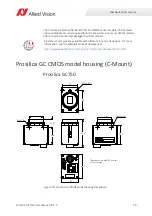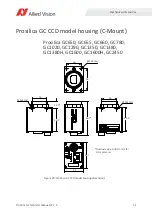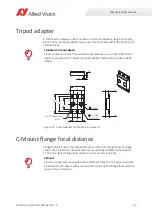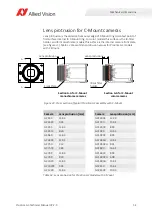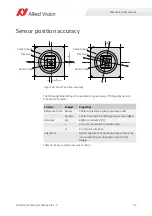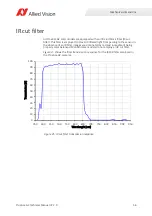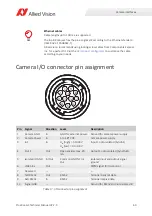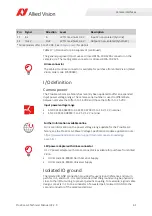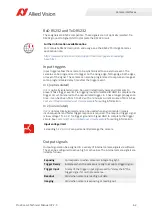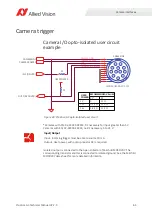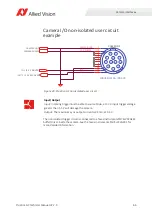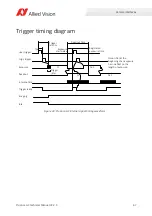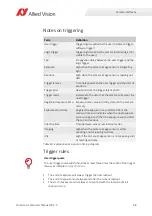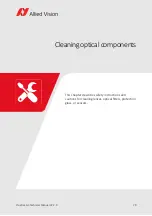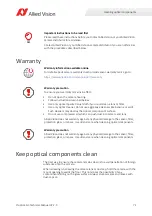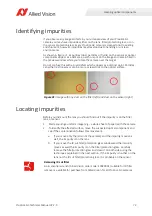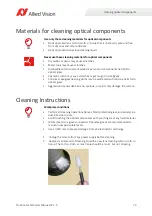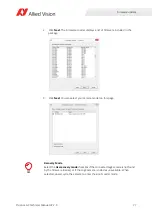
Camera interfaces
63
Prosilica GC Technical Manual V2.2.0
Out 1 (opto-isolated)
Out 1 signal is optically isolated and requires a user voltage with a suitable pull up
resistor. Tie signal ground to Isolated IO GND to complete the external circuit. See
Camera I/O opto-isolated user circuit example
for wiring information.
Out 2 (non-isolated)
Out 2 signal is not electrically isolated and can be used when environmental
electrical noise is inconsequential and faster trigger response is required. Use
Signal GND to complete the external circuit. The output signal is a low voltage TTL,
maximum 3.3 V. Not suitable for driving loads in excess of 24 mA. See
opto-isolated user circuit example
for wiring information.
Signal ground
Signal Ground must be connected to the user’s external circuit ground if In 2 or Out
2 is to be used, or if the RS232 port is to be used. Note that Signal Ground is
common with Camera GND; however, it is good practice to provide a separate
ground connection for power and signal.
Video iris
This signal can be used to drive the video input of a video iris lens. See
section for wiring information.
Reserved
These signals are reserved for future use and should be left disconnected.
Video iris output
Prosilica GC cameras provide built-in auto iris controls for controlling video-type
auto-iris lenses. These lenses are available from many popular security lens
companies including Pentax, Fujinon, Tamron, Schneider, etc.
Remote iris lens control allows the camera to be more adaptable to changing light
conditions. It allows the user to manually control the exposure and gain values and
rely solely on the auto iris for adjustment to ambient lighting.
Strobe
Programmable pulse based on one of the above events.
GPO
User programmable binary output.
Camera power
The following schematic uses CAMERA POWER to power the video iris lens, and
assumes CAMERA POWER = 12 V. Most video iris lenses operate at a 8 to 16 V input
voltage. Therefore, this circuit is not appropriate if using a 24 V camera power sup-
ply. Doing so may irreparably damage your lens. Please consult your video iris lens
specifications for the appropriate drive voltage.


